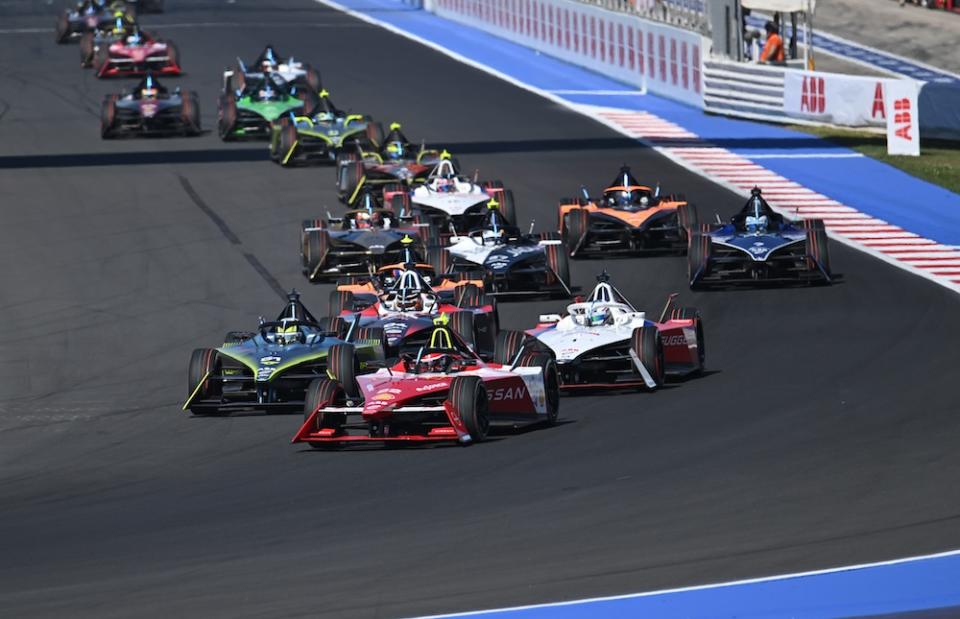Fans enjoying energy-saving races, Formula E chief says

Amid all the recent talk of “peloton-style” races in Formula E, the championship’s CEO Jeff Dodds offered an explanation of why those races happen, why flat-out sprints are unlikely to happen any time soon, and why he thinks that’s a good thing.
In Formula E, drivers start with less than half the energy required to make it through the race, leading to an abundance of energy saving, which leads to an abundance of overtaking as drivers lift, coast, and brake early to recuperate energy. It’s something that’s drawn mixed reactions, with Jean-Eric Vergne, Formula E’s only two-time champion, slamming the races as “horrible” at the Berlin E-Prix. Dodds, though says feedback from fans has been more positive, praising the increased number of passes that such tactics produce compared to other categories.
“I know we get some driver feedback that they find it more challenging to drive in that style,” Dodds told RACER. “A lot of them have grown up in an environment where they can literally qualify up front and that’s it — then they’re out front, everyone chasing them around — which is, for me, not a particularly interesting spectacle for bringing new fans to the sport.
“We get a load of feedback that, at the moment, the fans find this really compelling — we’re 30 percent growth in media year-on-year because people are tuning in to see this kind of racing.”
Dodds also pointed out that Formula E — which is celebrating its 10th anniversary this season — has never been about flat-out racing, and that the strategy and saving element has always been a part of the championship’s make-up.
“Formula E is not just about the racing element, it’s also about demonstrating the technology of the car,” he said. “Quite simply, our cars start the race with roughly half of the energy they need to finish the race; the rest is delivered by regeneration in the race. So do the math: if we didn’t do that, it would be a 20-minute race, something like that. Probably over 15-ish laps.
“45 minutes feels like a good payoff for a new motorsports audience. 20 minutes doesn’t. Saying that, this corrects itself over time, because by the time we get into GEN4, with the battery capacity building, within two and a half years we’ll have the ability to do flat-out, 30- to 35-minute races, and a full hour, an hour-and-five, hour-and-10 minute race with recharge capability.”
When asked about potential for an additional sprint race being added to a Formula E race weekend, a la Formula 1, Dodds said, “I’m not writing it off as an idea,” but again suggested that a potential Formula E sprint would still be too short. He feels the series’ Duels qualifying format does enough to satisfy those wanting to see drivers go flat out.
“In Formula 1, even the sprint race is 40-odd minutes, 50 minutes, so it’s roughly half the time of their full race,” he said. “My honest view is, I think 20 minutes will be too short.
“And the qualifying process, you do get that through the quarters, through the semis and in the finals, so you get a big chunk of watching quality, where all is person versus person, 300 or 350 kilowatts, and it’s flat out, go for your life.”

 Yahoo Autos
Yahoo Autos 